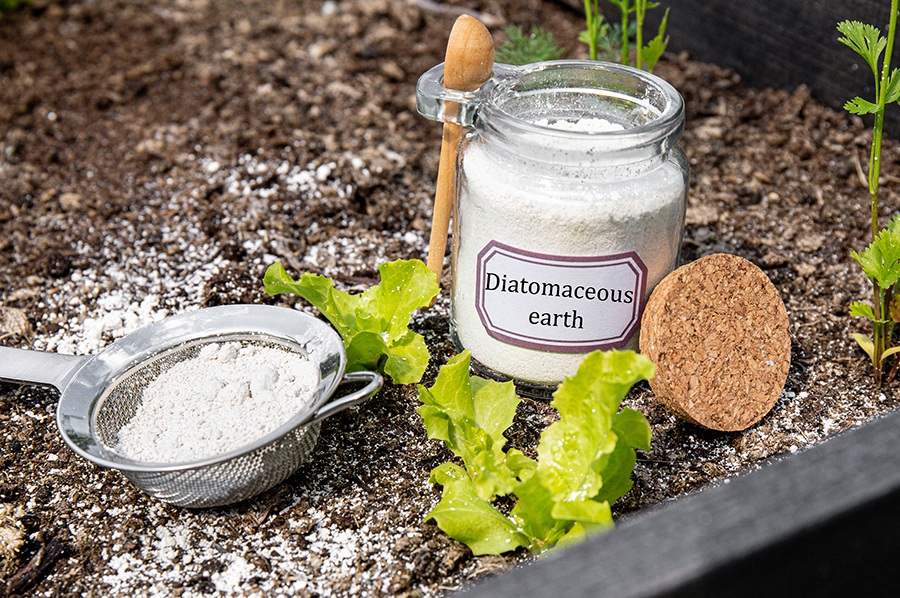We had a problem with small roaches, mainly in our kitchen area. Regular pest control did not seem to be effective, so Brian started spraying diatomaceous earth underneath the kitchen appliances and behind the cabinets with great success.
What is Diatomaceous earth? According to the Internet, it is made from the fossilized remains of tiny, aquatic organisms called diatoms. Their skeletons are made of a natural substance called silica. Over a long period of time, diatoms accumulated in the sediment of rivers, streams, lakes, and oceans. Today, silica deposits are mined from these areas.
Diatomaceous earth is not poisonous; it does not have to be eaten to be effective. Diatomaceous earth causes insects to dry out and die by absorbing the oils and fats from the cuticle of the insect’s exoskeleton. Its sharp edges are abrasive, speeding up the process. It remains effective as long as it is kept dry and undisturbed. Most diatomaceous earth is made of amorphous silicon dioxide. However, it can contain very low levels of crystalline silicon dioxide. The first pesticide products containing silicon dioxide (diatomaceous earth) were registered in 1960 to kill insects and mites.
Currently, there are over 150 products registered for use inside and outside of buildings, farms, gardens, and pet kennels. Some products can also be used directly on dogs and cats. Diatomaceous earth products are registered for use against bed bugs, cockroaches, crickets, fleas, ticks, spiders, and many other pests.
People can be exposed to diatomaceous earth if they breathe in the dust, eat it, get it on their skin, or get it in their eyes. Exposures can also occur if products are accessible to children or pets. Exposure can be limited by reading and following label directions.
However, there are thousands of non-pesticide products that contain diatomaceous earth. These include skin care products, toothpastes, foods, beverages, medicines, rubbers, paints, and water filters. The Food & Drug Administration lists diatomaceous earth as “Generally Recognized as Safe”. “Food grade” diatomaceous earth products are purified. They may be used as anticaking materials in feed, or as clarifiers for wine and beer.
Always follow label instructions and take steps to minimize exposure. If any exposures occur, be sure to follow the First Aid instructions on the product label carefully. For additional treatment advice, contact the Poison Control Center at 800-222-1222. If you wish to discuss a pesticide problem, please call 800-858-7378.






